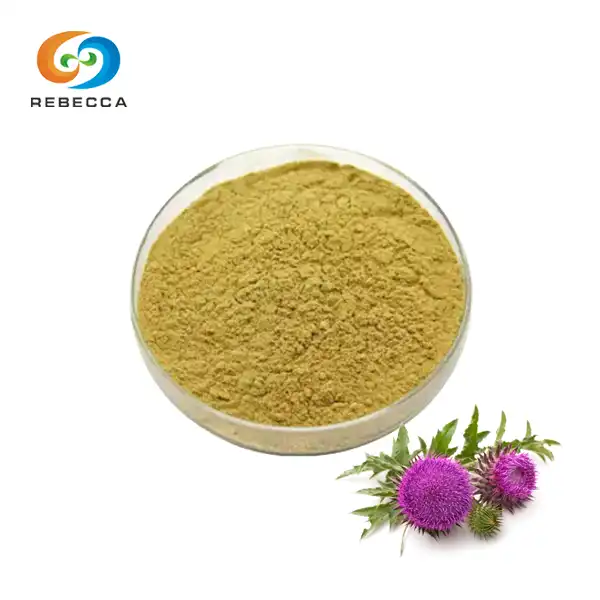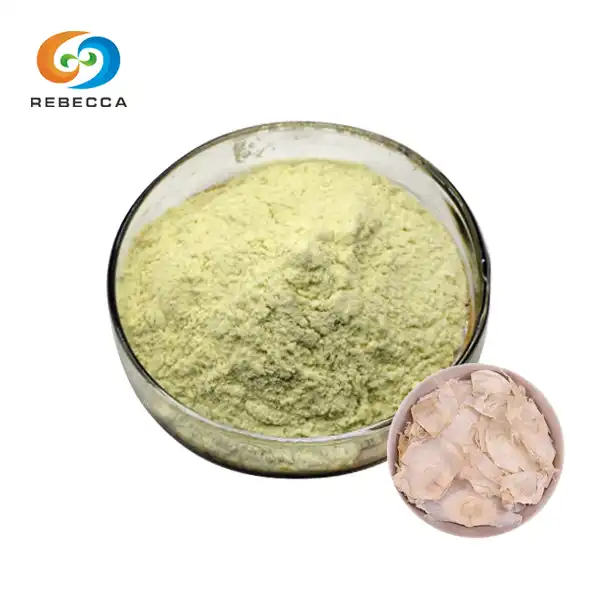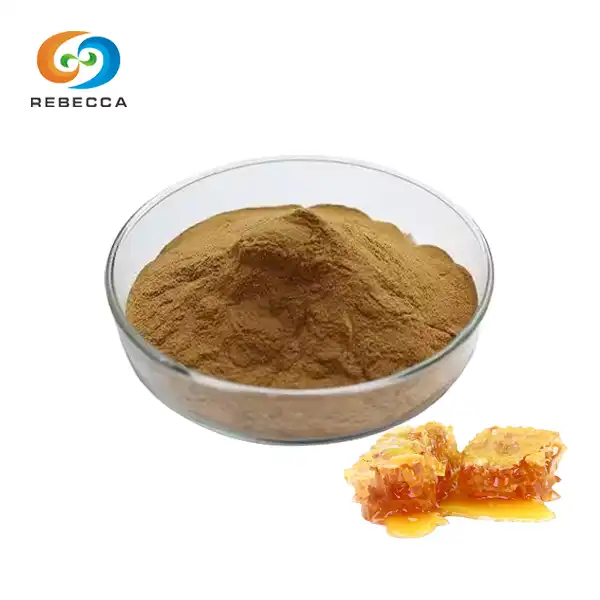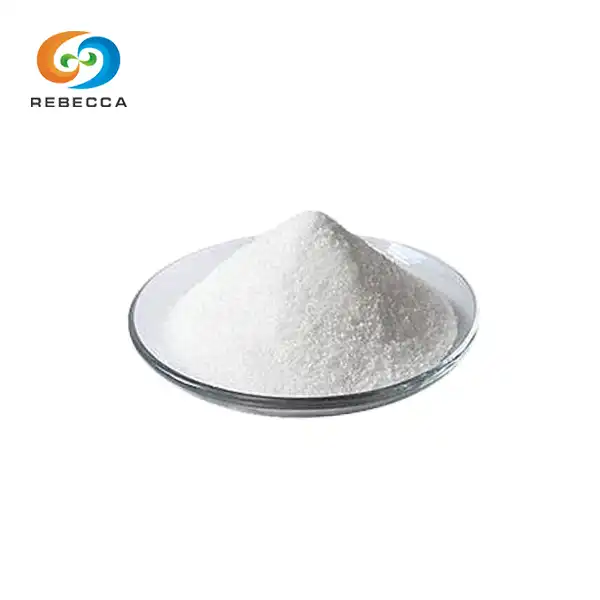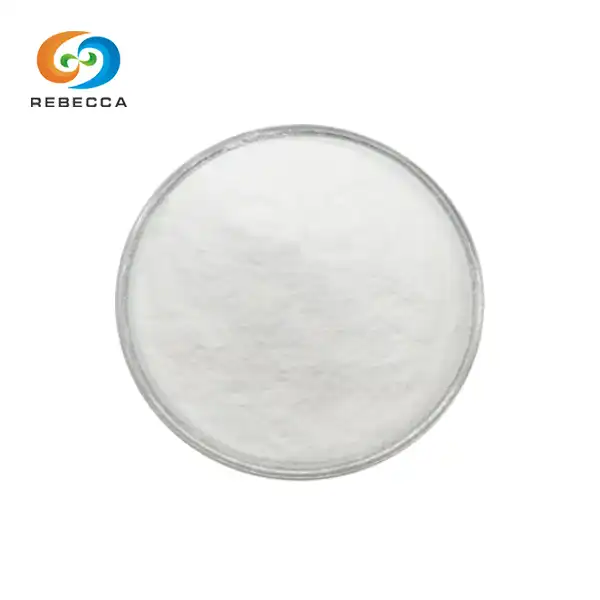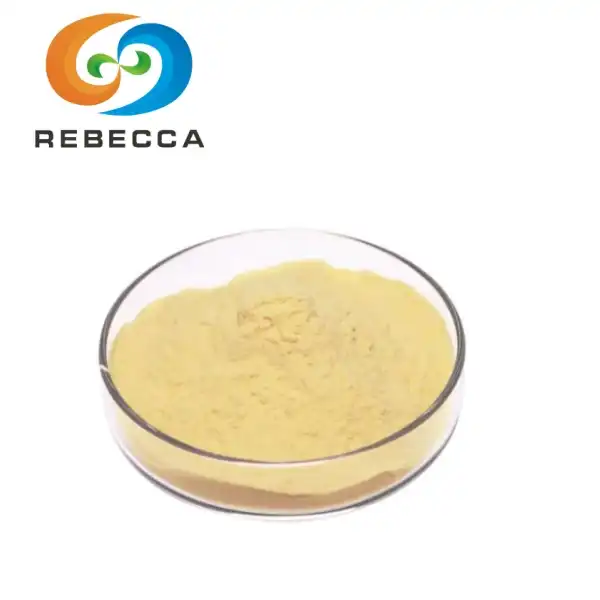Urolithin A VS Fisetin
In recent years, two compounds have gained significant attention in the world of health and longevity research: Urolithin A powder and Fisetin. Both are naturally occurring molecules with promising potential for improving various aspects of human health. This article will delve into the similarities and differences between Urolithin A and Fisetin, exploring their sources, metabolism, mechanisms of action, and potential health benefits.

Sources and Metabolism of Urolithin A and Fisetin
Urolithin A is a metabolite produced by gut bacteria from ellagitannins, which are found in foods such as pomegranates, strawberries, and walnuts. Interestingly, not all individuals can produce Urolithin A efficiently, as it depends on the composition of their gut microbiome. This has led to the development of Urolithin A powder supplements to ensure consistent intake.
Fisetin, on the other hand, is a flavonoid found naturally in various fruits and vegetables, with the highest concentrations in strawberries, apples, and persimmons. Unlike Urolithin A, Fisetin doesn't require bacterial metabolism and is directly absorbed in the gut, though its bioavailability can be limited.
Both compounds undergo phase II metabolism in the liver, resulting in various conjugates that circulate in the bloodstream. However, the metabolic fate of Urolithin A is more complex due to its initial production by gut bacteria, which can vary among individuals.

Mechanism of Action: How Urolithin A and Fisetin Work?
They exhibit their beneficial effects through multiple mechanisms, some of which overlap while others are distinct.
Urolithin A is primarily known for its ability to enhance mitophagy, the process by which cells remove damaged mitochondria. This is crucial for maintaining cellular health and energy production. it activates mitophagy by inducing the expression of genes involved in this process, such as PINK1 and Parkin.
Additionally, it has been shown to modulate the mTOR pathway, which is involved in cellular growth and metabolism. By inhibiting mTOR, Urolithin A may promote autophagy and potentially extend lifespan, as observed in animal studies.
Fisetin, while also supporting mitochondrial health, acts through different pathways. It's a potent activator of SIRT1, a protein associated with longevity and stress resistance. Fisetin also exhibits strong antioxidant properties, directly scavenging free radicals and upregulating cellular antioxidant defenses.
Both compounds have demonstrated anti-inflammatory effects, though through slightly different mechanisms. Urolithin A appears to modulate the NF-κB pathway, while Fisetin inhibits pro-inflammatory cytokine production and modulates various inflammatory signaling cascades.

Health Benefits: Potential Applications of Urolithin A and Fisetin
The unique mechanisms of action of Urolithin A and Fisetin translate into a wide array of potential health benefits, some of which are shared while others are more specific to each compound.
Urolithin A powder has shown promise in improving muscle function and endurance, likely due to its effects on mitochondrial health. Studies in both animals and humans have demonstrated enhanced muscle strength and exercise performance with Urolithin A supplementation. Additionally, its ability to promote mitophagy may have neuroprotective effects, potentially benefiting conditions like Alzheimer's and Parkinson's disease.
Fisetin, while also supporting brain health, has garnered attention for its potential senolytic properties. Senolytics are compounds that can selectively eliminate senescent cells, which accumulate with age and contribute to various age-related diseases. Animal studies have shown that Fisetin can reduce senescent cell burden and extend lifespan.
Both of them have demonstrated potential in supporting cardiovascular health. Urolithin A has been shown to improve endothelial function and reduce inflammation in blood vessels, while Fisetin may help lower blood pressure and reduce the risk of atherosclerosis.
In the realm of metabolic health, both compounds have shown promise in improving insulin sensitivity and glucose metabolism. Urolithin A may enhance glucose uptake in muscle cells, while Fisetin has been shown to reduce fat accumulation and improve lipid profiles in animal studies.
It's important to note that while many of these benefits have been demonstrated in laboratory and animal studies, more human clinical trials are needed to fully understand the effects and optimal dosing of both Urolithin A and Fisetin.

Urolithin A Powder For Sale
As research continues to uncover the potential benefits of Urolithin A and Fisetin, interest in these compounds is likely to grow. While both offer promising health benefits, their distinct mechanisms of action suggest that they may complement each other in promoting overall health and longevity.
Rebecca is a company that specializes in the production of Urolithin A Powder. Our factory directly supplies top quality and high purity Urolithin A Powder with a specification of 98%. If you're interested in our product or have any questions, please feel free to contact us at information@sxrebecca.com.
References:
- Espín, J. C., et al. (2013). Annals of Nutrition and Metabolism, 62(1), 31-41.
- Tomás-Barberán, F. A., et al. (2017). Molecular Nutrition & Food Research, 61(1), 1600830.
- Ryu, D., et al. (2016). Nature Medicine, 22(8), 879-888.
- Andreux, P. A., et al. (2019). Nature Metabolism, 1(6), 595-603.
- Maher, P. (2015). Frontiers in Bioscience (Scholar Edition), 7, 58-68.
- Singh, A., et al. (2019). Nutrients, 11(10), 2302.
